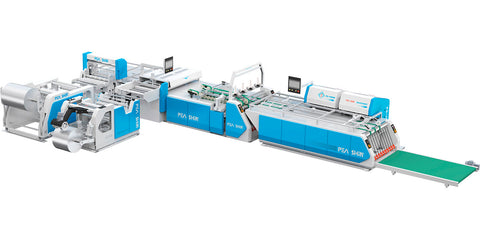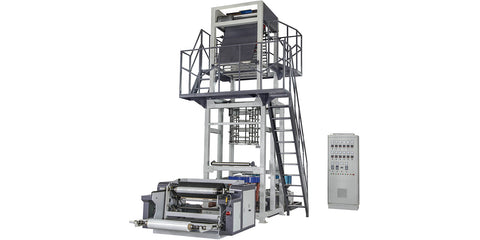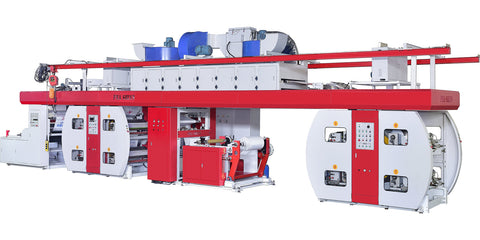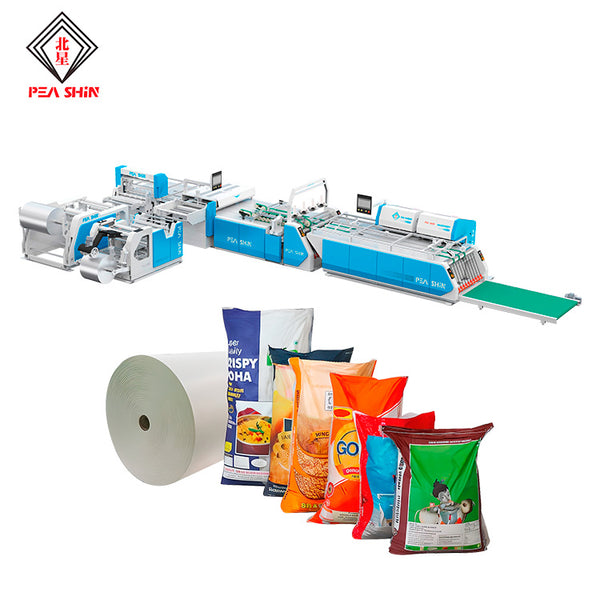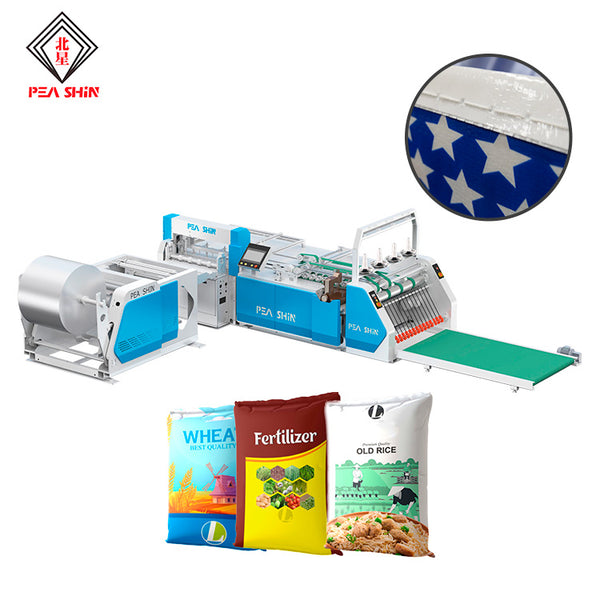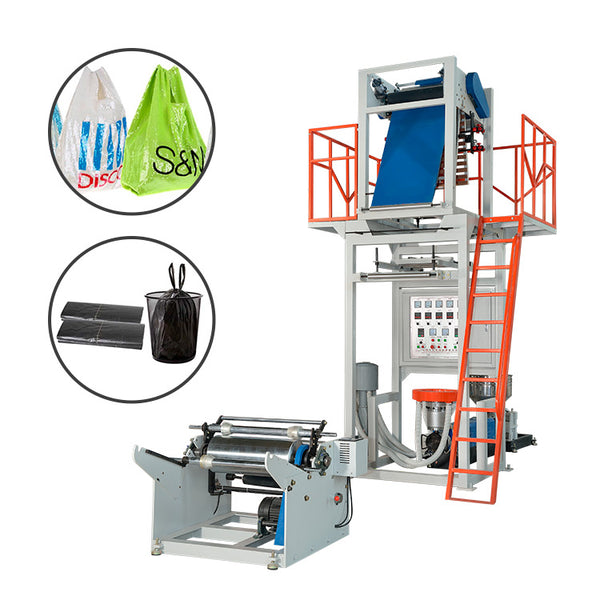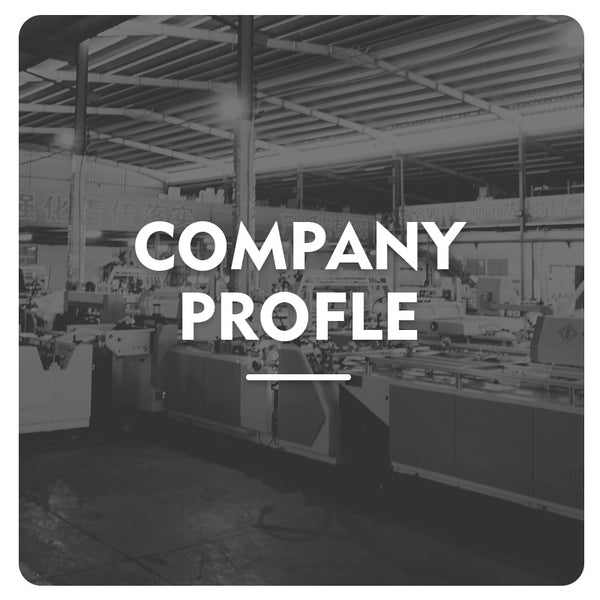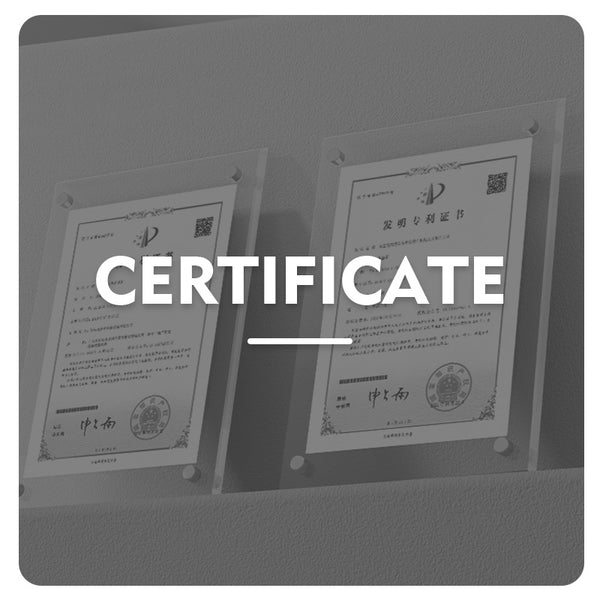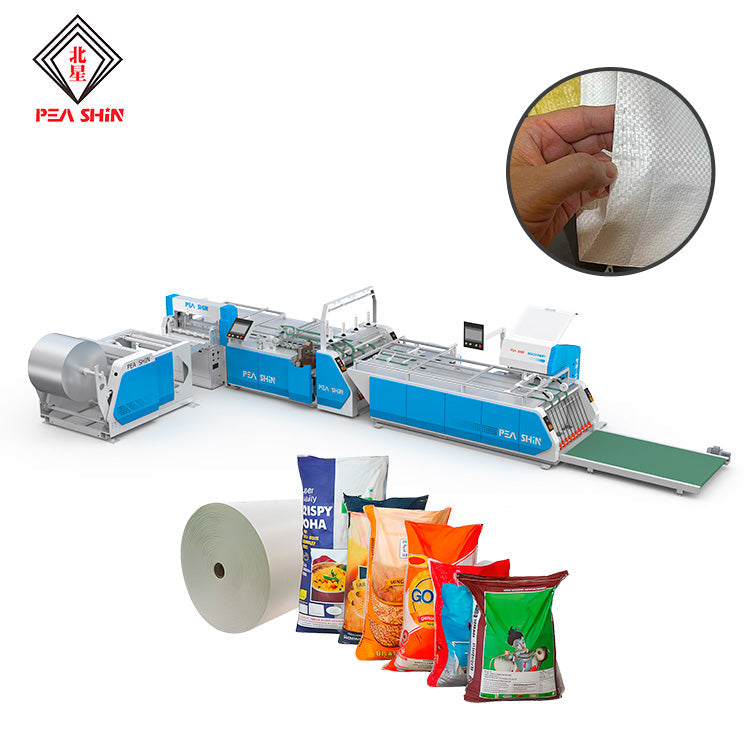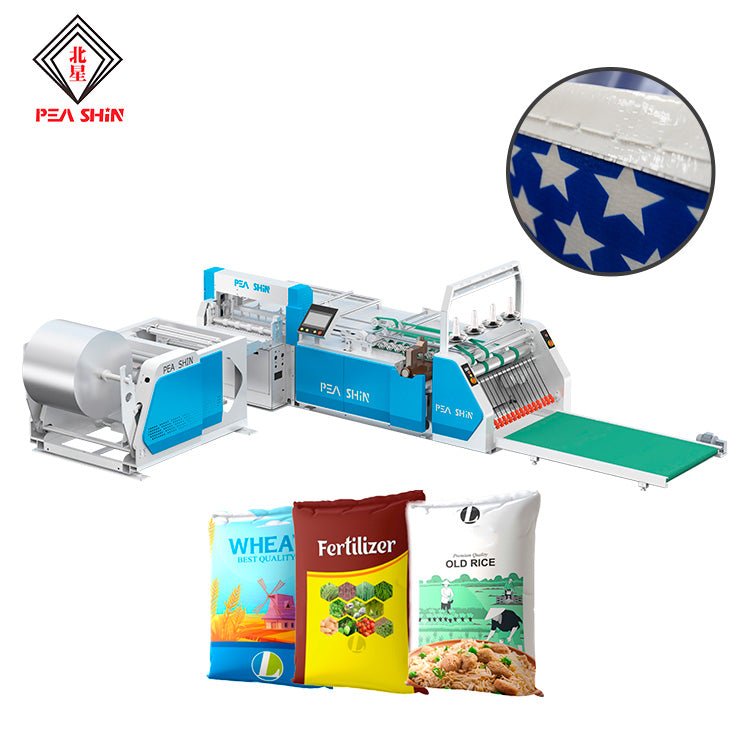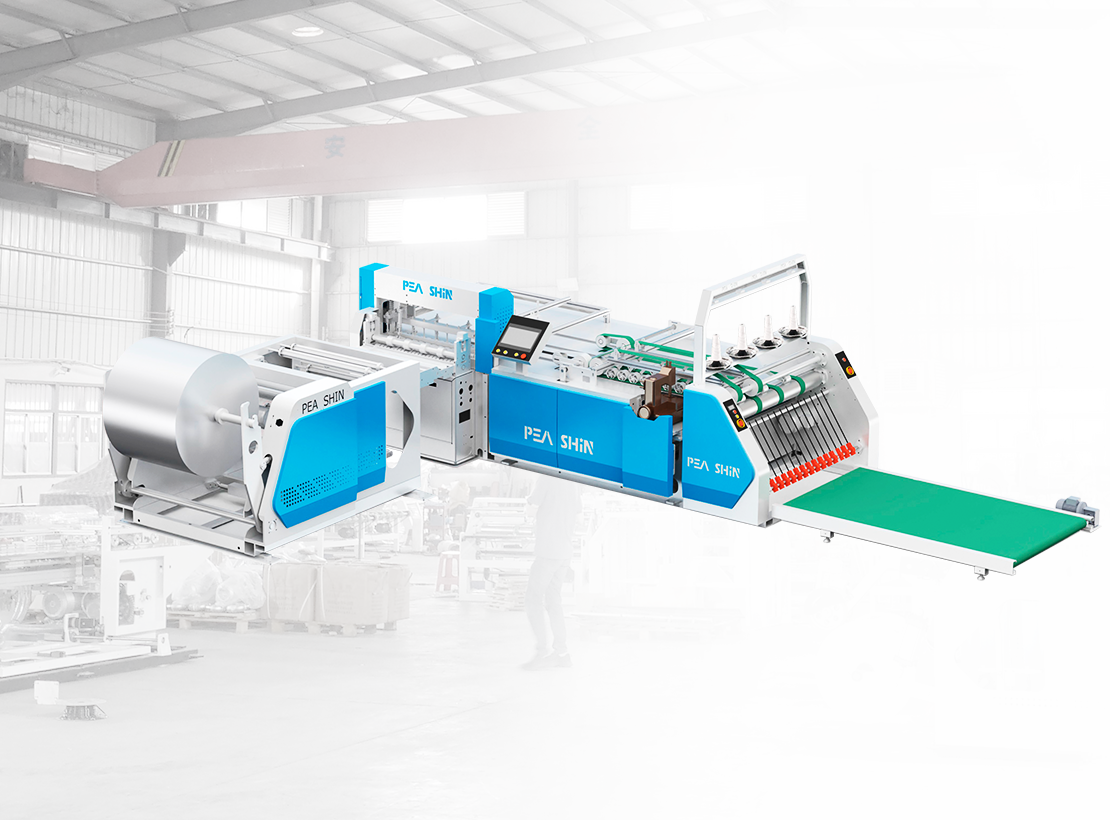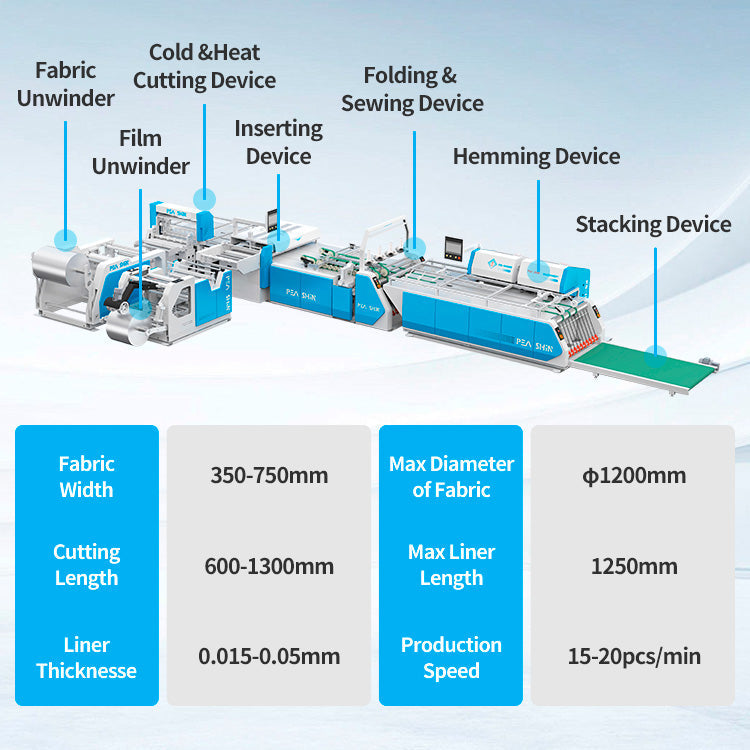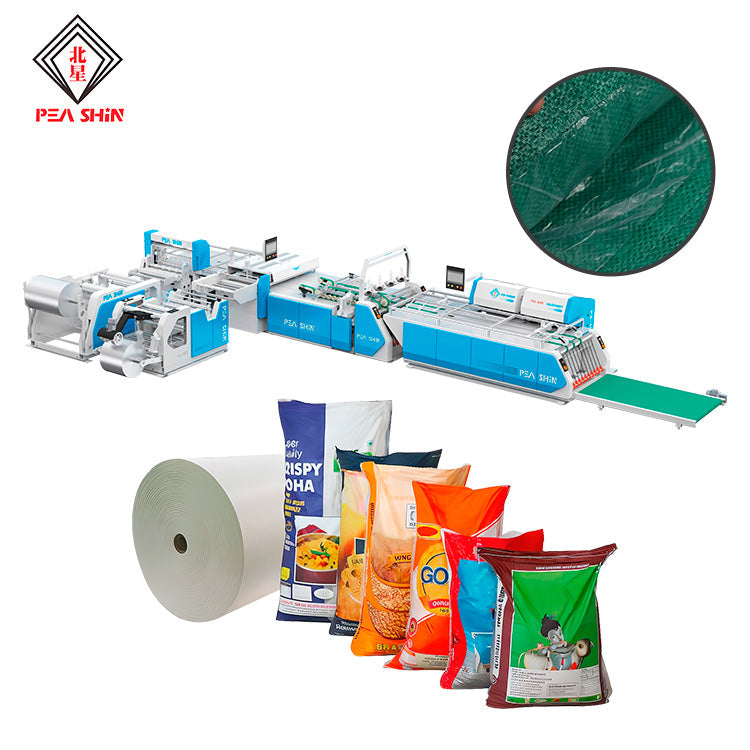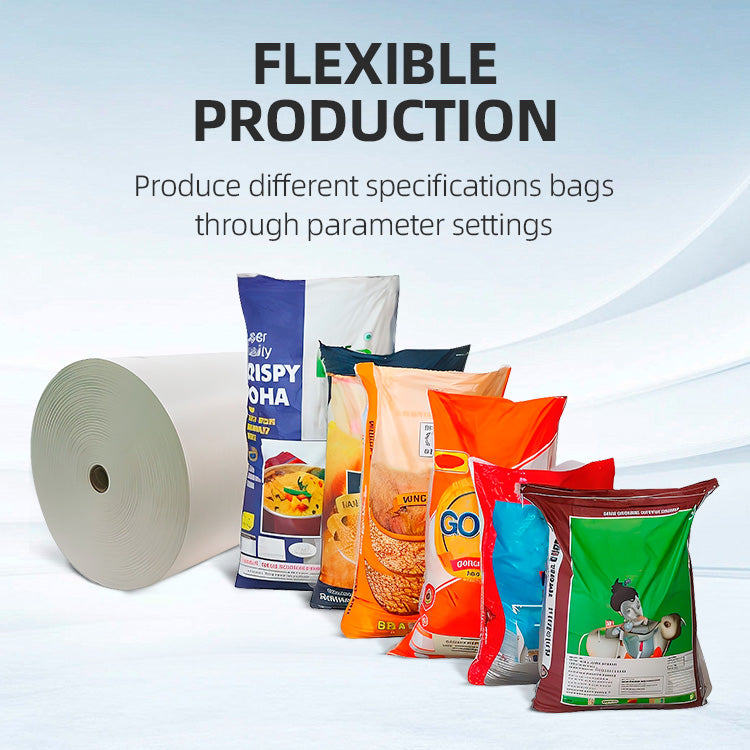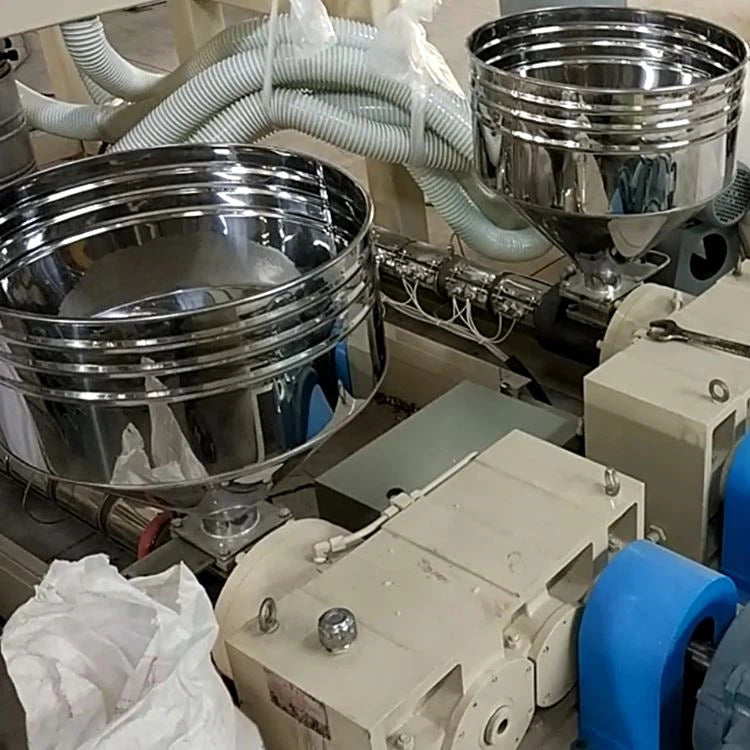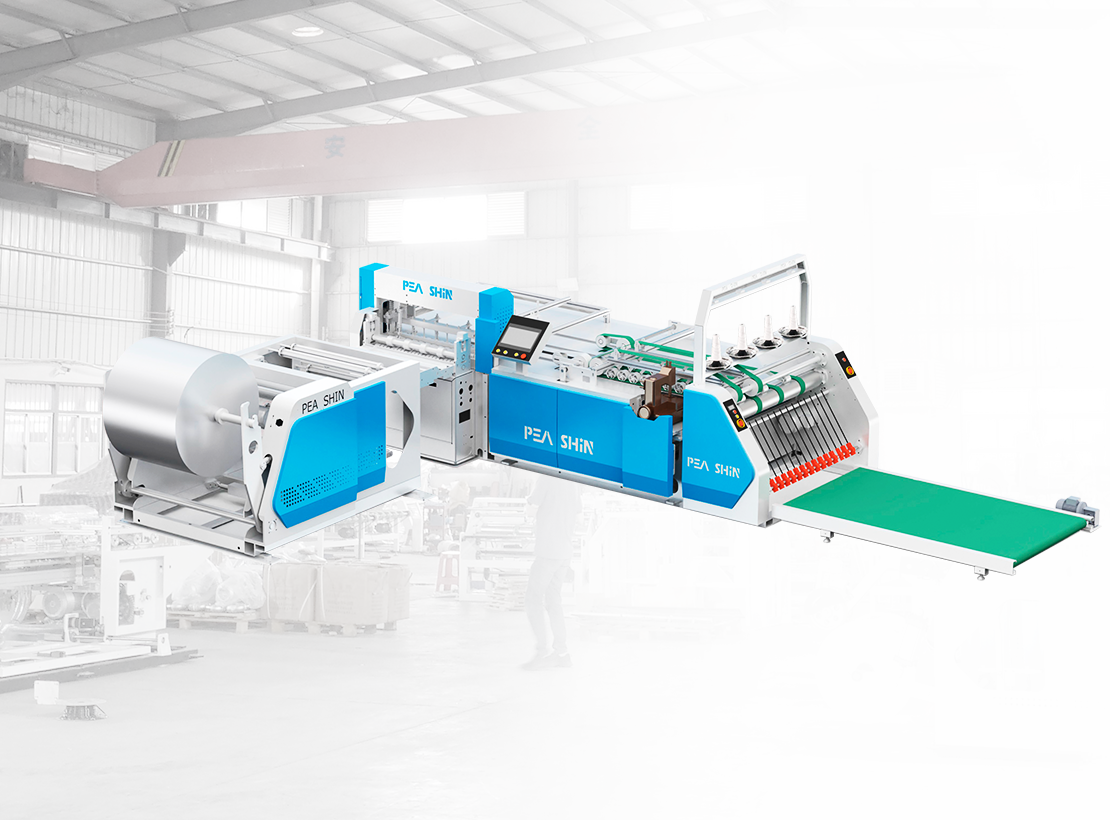How PE Film Cutting, Inserting & Sewing Machines Are Revolutionizing Liner Bag Manufacturing
In the world of industrial packaging, woven polypropylene (PP) and polyethylene (PE) bags remain a durable, cost-effective solution for transporting bulk materials. But for moisture-sensitive products like fertilizers, chemicals, grains, or powders, an added layer of protection is required: an inner liner. Traditionally, inserting a PE liner into each bag was a labor-intensive step. But now, PE film cutting, inserting, and sewing machines—like the PS-CIS750—are transforming this process with automation and precision.
Why Liner Bags Are Essential
Woven bags are strong, lightweight, and breathable. However, without a liner, they offer little protection against moisture, contamination, or leakage. That’s where PE film liners come into play. These thin sheets of polyethylene are placed inside the woven bag, forming a protective barrier that:
-
Prevents product leakage
-
Blocks moisture and contamination
-
Improves hygiene and shelf-life
-
Meets regulatory requirements for food or chemical products
Inserting these liners manually can slow production and introduce quality issues. Automation is the future.
Enter the All-in-One PE Film Cutting, Inserting & Sewing Machine
Modern machines like the PS-CIS750 integrate three essential functions into a single unit:
-
PE Film Cutting
-
Liner Inserting into Woven Bags
-
Bottom Sewing for Final Sealing
Instead of three separate stations or multiple operators, manufacturers can now automate the entire liner bag process on a compact, efficient platform.
How It Works: Step-by-Step
1. Precise PE Film Cutting
The machine unwinds PE film from a roll and cuts it into precise lengths, guided by a PLC-controlled servo system. This ensures every liner fits perfectly, minimizing waste and inconsistencies.
2. Automated Liner Inserting
Once cut, the film is guided and inserted into a pre-opened woven bag. This step used to be manual, requiring trained staff and plenty of time. Now, it’s hands-free, consistent, and fast.
3. Bottom Sewing and Final Touch
After the liner is placed, the bag’s bottom is sewn shut using industrial-grade stitching, securing both the woven exterior and PE interior in a single pass. This guarantees a tight seal and structural integrity.
Benefits for Manufacturers
✅ Efficiency Boost
Automating three steps into one machine drastically reduces cycle times and labor costs.
✅ Improved Consistency
Human error in liner placement or stitching is eliminated, leading to higher-quality products.
✅ Reduced Waste
Accurate cutting and insertion mean fewer discarded materials and less rework.
✅ Compact Footprint
A single machine takes up less space than three standalone units or manual workstations.
✅ High Output
Machines like the PS-CIS750 can handle up to 20 bags per minute—ideal for bulk orders.
Industry Applications
The use of PE film liner inserting machines is rapidly expanding across multiple industries:
-
Chemical Packaging: prevents chemical leaks and reactions with moisture.
-
Fertilizers: protects against clumping and spoilage.
-
Food Packaging (e.g., rice, flour, sugar): ensures hygiene and shelf stability.
-
Construction Materials (cement, sand): keeps materials dry and contained.
-
Feed and Agriculture: reduces spoilage and infestation.
Anywhere where moisture or contamination can damage the product, liner bags are the solution—and automated machines are the tool.
Challenges Before Automation
Prior to adopting cutting/inserting/sewing machines, manufacturers faced:
-
Slow production due to manual liner placement
-
Labor shortages or high labor costs
-
Quality issues from inconsistent liner positioning
-
Difficulty meeting hygiene or export standards
Now, smart automation provides an answer to all of the above—while keeping costs down in the long term.
What to Look for in a Machine
If you’re considering upgrading your factory, look for:
-
Compatibility with multiple bag sizes
-
Customizable liner lengths
-
Reliable stitching/sealing mechanisms
-
Easy-to-use control interface
-
Stable performance over long production runs
Choosing a machine like PEASHIN’s PS-CIS750 ensures your system is future-ready, with minimal downtime and optimal output.
Conclusion
As demand grows for cleaner, safer, and more efficient packaging solutions, PE film cutting, inserting & sewing machines are becoming essential in modern factories. They offer the speed, precision, and quality assurance that today’s markets demand—while freeing up labor and space for higher-value tasks.
For manufacturers of woven PP or PE bags, investing in this kind of automation is more than a convenience—it’s a competitive necessity.
In the world of industrial packaging, woven polypropylene (PP) and polyethylene (PE) bags remain a durable, cost-effective solution for transporting bulk materials. But for moisture-sensitive products like fertilizers, chemicals, grains, or powders, an added layer of protection is required: an inner liner. Traditionally, inserting a PE liner into each bag was a labor-intensive step. But now, PE film cutting, inserting, and sewing machines—like the PS-CIS750—are transforming this process with automation and precision.
Why Liner Bags Are Essential
Woven bags are strong, lightweight, and breathable. However, without a liner, they offer little protection against moisture, contamination, or leakage. That’s where PE film liners come into play. These thin sheets of polyethylene are placed inside the woven bag, forming a protective barrier that:
-
Prevents product leakage
-
Blocks moisture and contamination
-
Improves hygiene and shelf-life
-
Meets regulatory requirements for food or chemical products
Inserting these liners manually can slow production and introduce quality issues. Automation is the future.
Enter the All-in-One PE Film Cutting, Inserting & Sewing Machine
Modern machines like the PS-CIS750 integrate three essential functions into a single unit:
-
PE Film Cutting
-
Liner Inserting into Woven Bags
-
Bottom Sewing for Final Sealing
Instead of three separate stations or multiple operators, manufacturers can now automate the entire liner bag process on a compact, efficient platform.
How It Works: Step-by-Step
1. Precise PE Film Cutting
The machine unwinds PE film from a roll and cuts it into precise lengths, guided by a PLC-controlled servo system. This ensures every liner fits perfectly, minimizing waste and inconsistencies.
2. Automated Liner Inserting
Once cut, the film is guided and inserted into a pre-opened woven bag. This step used to be manual, requiring trained staff and plenty of time. Now, it’s hands-free, consistent, and fast.
3. Bottom Sewing and Final Touch
After the liner is placed, the bag’s bottom is sewn shut using industrial-grade stitching, securing both the woven exterior and PE interior in a single pass. This guarantees a tight seal and structural integrity.
Benefits for Manufacturers
✅ Efficiency Boost
Automating three steps into one machine drastically reduces cycle times and labor costs.
✅ Improved Consistency
Human error in liner placement or stitching is eliminated, leading to higher-quality products.
✅ Reduced Waste
Accurate cutting and insertion mean fewer discarded materials and less rework.
✅ Compact Footprint
A single machine takes up less space than three standalone units or manual workstations.
✅ High Output
Machines like the PS-CIS750 can handle up to 20 bags per minute—ideal for bulk orders.
Industry Applications
The use of PE film liner inserting machines is rapidly expanding across multiple industries:
-
Chemical Packaging: prevents chemical leaks and reactions with moisture.
-
Fertilizers: protects against clumping and spoilage.
-
Food Packaging (e.g., rice, flour, sugar): ensures hygiene and shelf stability.
-
Construction Materials (cement, sand): keeps materials dry and contained.
-
Feed and Agriculture: reduces spoilage and infestation.
Anywhere where moisture or contamination can damage the product, liner bags are the solution—and automated machines are the tool.
Challenges Before Automation
Prior to adopting cutting/inserting/sewing machines, manufacturers faced:
-
Slow production due to manual liner placement
-
Labor shortages or high labor costs
-
Quality issues from inconsistent liner positioning
-
Difficulty meeting hygiene or export standards
Now, smart automation provides an answer to all of the above—while keeping costs down in the long term.
What to Look for in a Machine
If you’re considering upgrading your factory, look for:
-
Compatibility with multiple bag sizes
-
Customizable liner lengths
-
Reliable stitching/sealing mechanisms
-
Easy-to-use control interface
-
Stable performance over long production runs
Choosing a machine like PEASHIN’s PS-CIS750 ensures your system is future-ready, with minimal downtime and optimal output.
Conclusion
As demand grows for cleaner, safer, and more efficient packaging solutions, PE film cutting, inserting & sewing machines are becoming essential in modern factories. They offer the speed, precision, and quality assurance that today’s markets demand—while freeing up labor and space for higher-value tasks.
For manufacturers of woven PP or PE bags, investing in this kind of automation is more than a convenience—it’s a competitive necessity.
